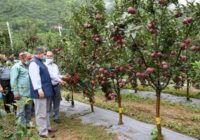Reorganization and politics of statehood Himachal Pradesh: HPAS Mains
The Reorganization and Politics of Statehood of Himachal Pradesh is a significant chapter in the political and administrative history of India. Himachal Pradesh’s journey from a Chief Commissioner’s Province to a full-fledged state was a long, complex process that involved socio-political struggles, identity formation, and integration of several princely states. Below is a detailed study… Read More »







